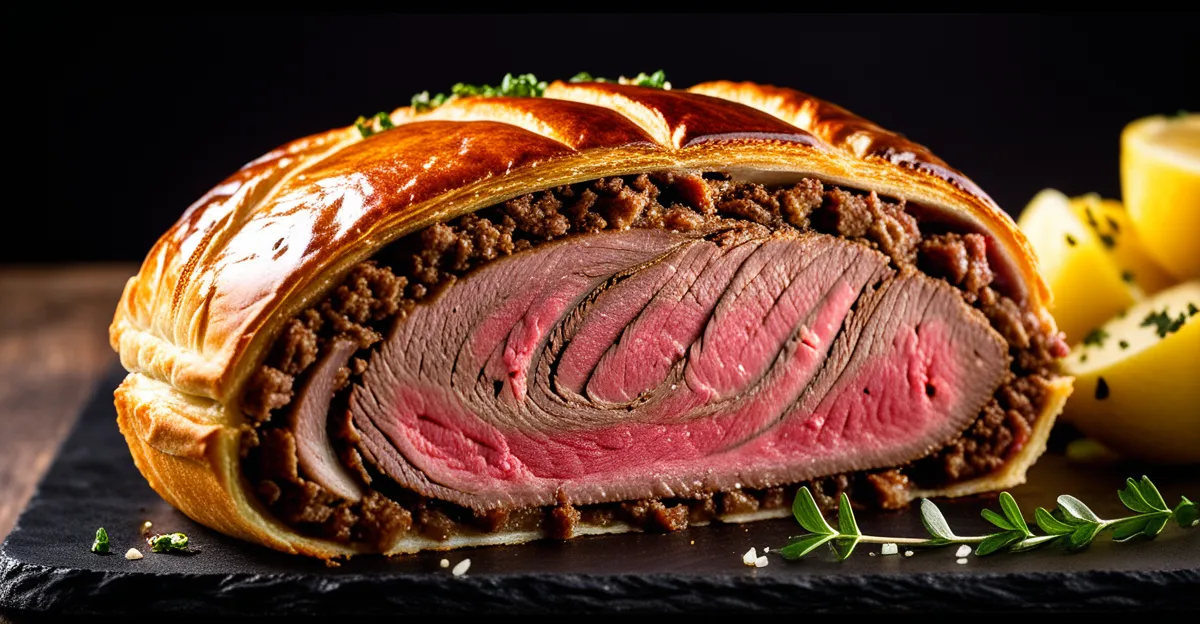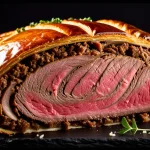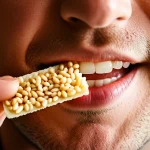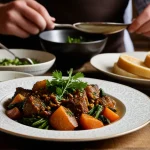Essential Ingredients for a Classic Beef Wellington
Understanding the beef Wellington ingredients is crucial for a successful dish. At its heart lies the beef fillet, chosen for its tenderness and flavor. Selecting a high-quality fillet ensures a succulent centre once cooked. The fillet’s significance cannot be overstated—it must be well-trimmed and properly seared to lock in juices before assembly.
The next essential is the puff pastry. This ingredient serves as a crisp, golden envelope that safeguards the beef during cooking. Puff pastry must be buttery and light, providing a flaky texture that contrasts perfectly with the tender fillet. Its ability to puff and brown is critical, offering both visual appeal and mouthfeel.
This might interest you : How Can Classic UK Dishes Benefit Your Health?
Mushrooms, often prepared as duxelles, are also vital. This finely chopped mushroom mixture brings deep umami flavor without excess moisture that could sog the pastry. The preparation involves cooking mushrooms until almost dry, concentrating flavor and enriching the overall dish. Together, these beef Wellington essentials combine in harmony—each contributing to the iconic taste and texture that defines the classic beef Wellington.
Supporting Elements That Enhance Beef Wellington
Adding Parma ham or prosciutto to the classic beef Wellington elevates both flavor and texture. These thinly sliced cured meats act as a protective barrier, wrapping closely around the beef fillet. This layer helps keep the meat moist by preventing juices from seeping into the puff pastry, which can cause sogginess. Additionally, Parma ham contributes a salty, savory depth that complements the beef and mushroom duxelles, enhancing the overall complexity of the dish.
In the same genre : What are the steps to crafting a perfect Eton mess?
In many recipes, pâté or English mustard is spread over the beef before adding the Parma ham. Pâté adds rich, creamy mouthfeel and an earthy undertone, balancing the savory notes. English mustard, on the other hand, introduces a subtle heat and piquancy, cutting through the richness to brighten the palate. The choice between pâté and mustard depends on personal preference but both are considered essential beef Wellington additions for their ability to layer flavor.
Finally, seasoning with salt, black pepper, and occasionally fresh herbs like thyme is vital. These simple seasonings bring balance and enhance the natural flavors of each element. Proper seasoning ensures the beef Wellington ingredients work harmoniously, making each bite satisfyingly complex yet refined.
Key Steps in Layering and Building Texture
Mastering beef Wellington assembly relies on precise layering to protect the fillet while creating harmonious texture. The layering technique starts by spreading the mushroom duxelles evenly over the seared beef fillet. This step infuses moisture and umami directly onto the meat, enhancing its flavor without causing sogginess.
Next, a layer of Parma ham or prosciutto wraps the beef and duxelles, acting as a moisture barrier. This layer locks in juices, preventing the pastry from becoming wet and maintaining crispness throughout baking. The cured meat also adds a subtle salty depth that complements the richness of the beef Wellington essentials.
Crucially, the puff pastry encloses the entire assembly. Applying an egg wash on the pastry’s exterior ensures a beautifully golden finish and helps seal the edges, keeping the Wellington intact during roasting. The pastry delivers the textural contrast prized in the dish: flaky, buttery layers encasing tender meat.
Understanding the role of each layer clarifies why this precise order is vital. Each ingredient both enhances flavor and safeguards texture, making the classic beef Wellington’s assembly a delicate, skillful process that achieves balance in taste and structure.








